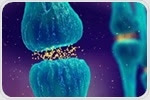| |
 Normal cells have a complex system of checks and balances that regulate cell division. In cancer, the balance is tipped in favor of cell proliferation. This imbalance arises from increased levels or activity of oncoproteins (proteins that promote cell growth) or decreased levels or activity of tumor suppressors (proteins that limit cell growth). Normal cells have a complex system of checks and balances that regulate cell division. In cancer, the balance is tipped in favor of cell proliferation. This imbalance arises from increased levels or activity of oncoproteins (proteins that promote cell growth) or decreased levels or activity of tumor suppressors (proteins that limit cell growth). | |
|
| |
 Oxidants, such as reactive oxygen species (ROS), are known to induce damage to therapeutic proteins. Although cells and tissues usually have antioxidant systems to combat ROS and maintain the balance between formation and neutralization of ROS, in some cases this delicate balance may be perturbed, leading to physiological and molecular damage to proteins. In these cases, methods need to employed to reduce the likelihood of damage. Oxidants, such as reactive oxygen species (ROS), are known to induce damage to therapeutic proteins. Although cells and tissues usually have antioxidant systems to combat ROS and maintain the balance between formation and neutralization of ROS, in some cases this delicate balance may be perturbed, leading to physiological and molecular damage to proteins. In these cases, methods need to employed to reduce the likelihood of damage. | |
|
| |
 As the name might suggest, isoleucine is, in fact, an isomer of leucine. This means that both amino acids have the same molecular formula but differ in structure. Importantly, the two isomers interact differently with other amino acids within mammalian cells. Hence, being able to identify and differentiate between leucine and isoleucine is essential. As the name might suggest, isoleucine is, in fact, an isomer of leucine. This means that both amino acids have the same molecular formula but differ in structure. Importantly, the two isomers interact differently with other amino acids within mammalian cells. Hence, being able to identify and differentiate between leucine and isoleucine is essential. | |
|
| |
 Combining electrochemistry with mass spectrometry (EC-MS) provides a powerful method to determine the products and intermediates of electrochemical reactions. Apart from understanding the mechanism of various redox reactions, it can also be used for other applications, including the study of neurotransmission. Combining electrochemistry with mass spectrometry (EC-MS) provides a powerful method to determine the products and intermediates of electrochemical reactions. Apart from understanding the mechanism of various redox reactions, it can also be used for other applications, including the study of neurotransmission. | |
|
| |
 Microdialysis is a valuable tool in neuroscience that can be used to investigate and learn about complex brain functions through the collection of small-molecular-weight substances from the extracellular fluid or interstitial space. Microdialysis is a valuable tool in neuroscience that can be used to investigate and learn about complex brain functions through the collection of small-molecular-weight substances from the extracellular fluid or interstitial space. | |







No hay comentarios:
Publicar un comentario